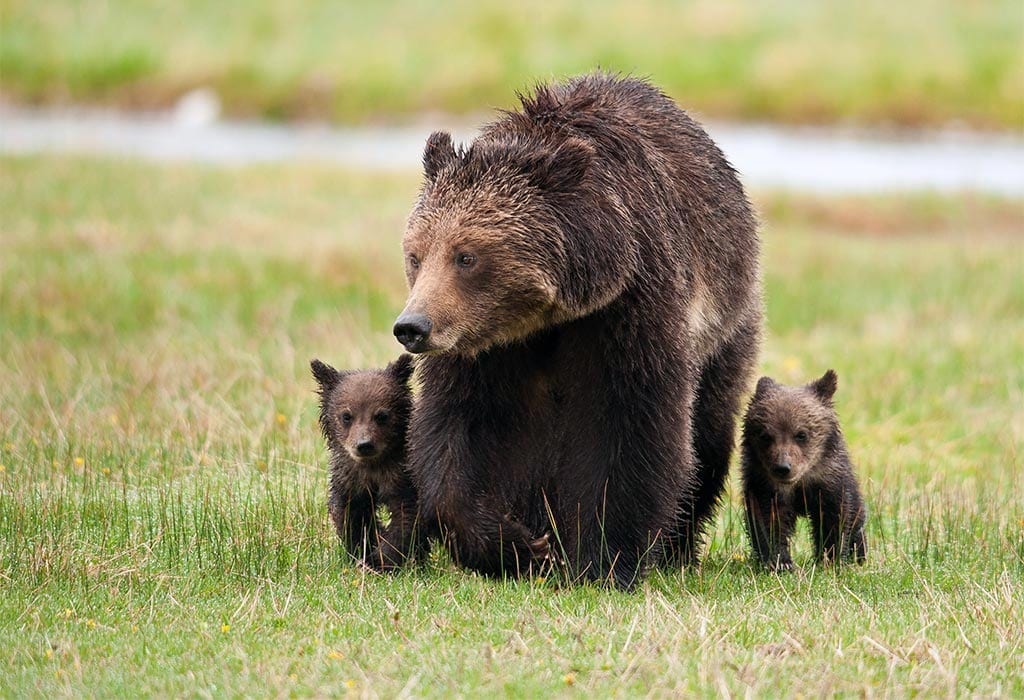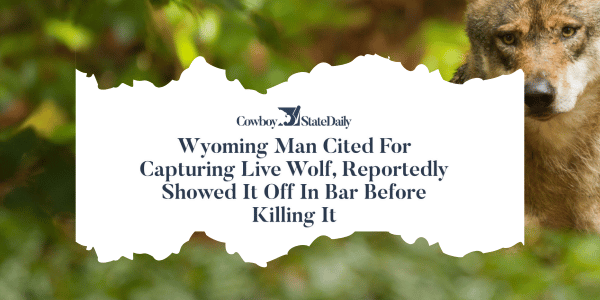Photo Credit: Tom Brakefield
Mother Nature’s Moms
Wildlife Mother’s Day
“Mother is God number two”
— Chewa proverb, Malawi
The term “mother nature” is an apt one. Nature provides the air we breathe, the water we drink, the food we eat, and nurtures our spirits. It does all this selflessly, without expectation for thanks or praise.
While most human mothers would appreciate a call on Mother’s Day, they didn’t get into the mom business for glory. And anyone who has ever witnessed a mother duck trying to herd her ducklings across the street realizes wildlife moms didn’t either– it’s about love.
For wildlife, there is no nature vs. nurture, it’s both. On this Mother’s Day, we look at five species WildEarth Guardians works to protect, and see what being a mom in the wild entails.
Grizzly bear
Conservation status: Threatened
Current range: Once found throughout the West, grizzlies today live in isolated populations in the Northern Rocky states, Alaska, and Canada.

Female grizzly bear with cubs. Photo by Sam Parks.
If the term for strict mothers that push their children to achieve is “tiger moms”, then maybe “grizzly moms” should be the term for gentle, fiercely protective mothers who put the hammer down on anyone who threatens their children. This is for good reason– throughout her entire life, a grizzly mom may only have a handful of cubs that survive until adulthood.
Length of pregnancy: Approximately 8 months
Number in litter: 2-4 cubs
How long cubs stay with mom: 3 years
Number of litters: Grizzlies can live up to 25 years in the wild, but may not have their first litter until 10 years old. Grizzly moms may only have 3-4 litters in a lifetime.
Threats to young: Vehicle and train strikes, disease, malnourishment, and other grizzly bears.
What about Dad: Grizzly bear fathers are worse than just absent– they will kill cubs.
How Guardians is helping grizzlies: In November 2023, WildEarth Guardians won a case to prevent the trapping and snaring of grizzlies in Montana, is suing Burlington Northern Railway Company for killing bears, and is working to prevent the U.S. Fish and Wildlife Service from removing Endangered Species protections for grizzly bears in Montana and Wyoming.
Salmon
Conservation status: 28 species of salmon are endangered or threatened in the U.S.
Current range: All of America’s Pacific river systems used to have salmon runs, but many have been lost or are in rapid decline.

Salmon swimming upstream. Photo by Patrick, Adobe Stock.
Salmon mothers journey from the ocean saltwater back to the freshwater river homes where they were born, avoiding countless predators along the way. The footage we see of salmon jumping waterfalls and scooting along shallow streams is just a small part of their epic life cycle.
Length of pregnancy: Salmon eggs are fertilized outside of the female’s body; after she lays the eggs in a pebble nest, the father fertilizes the eggs. It takes around 3 months before these eggs hatch.
Number in hatch: Females lay between 1,000 to 17,000 eggs, depending on the subspecies. Only 10-15% of these eggs will successfully hatch.
Number of hatches: Just one. After the salmon mother lays her eggs, she dies and her nutrients go back into the river system.
Threats to young: Other fish, pollution, sediment, climate-driven warming waters, and dams. Only 1% of all young successfully return to their birth waters.
What about Dad: Salmon fathers will defend the female and nest for a short time before they die, and return their nutrients to the river.
How Guardians is helping salmon: Guardians has won the removal of dams and improved their operations to improve salmon habitat, fought Trump-era decisions to harm forested areas that feed rivers, and advocated for funding to remove old logging roads that created harmful sediment in streams and rivers.
Wolves
Conservation status: No federal protections in Idaho, Montana, and Wyoming, threatened in Minnesota, and endangered everywhere else in the lower 48 United States.
Current range: Northern Rockies, small numbers in Washington, Oregon, Utah, Arizona, New Mexico, and California, and small reintroduced population in Colorado.

Wolf pup nuzzles its mother. Photo by hkuchera, Adobe Stock.
Wolf mothers are famously good moms. In myths and in real life they’ve adopted other species and raised them as their own, including the occasional human child. They form extremely tight emotional bonds to their young and mates, which helps the pack endure stressful times. Usually there is only one mother, the alpha female, within a pack.
Length of pregnancy: Around 70 days.
Number in litter: Average of five pups.
Number of litters: The average wolf lifespan is 5 years, and they aren’t sexually mature until 2-3 years. An alpha female may only have 1-3 litters.
Threats to young: Hunters, trappers, vehicle strikes, injury, disease, and rival wolf packs.
What about Dad: Wolf dads are very involved in raising young, as are aunts, uncles, and other cousin wolves. It takes a pack to raise a pup!
How Guardians is helping wolves: Guardians helped lead the reintroduction of wolves in Arizona and New Mexico (“lobos”), and in Colorado late 2023. We are currently working to have wolves in the Northern Rockies provided endangered species protections, and fighting a bill by Rep. Lauren Boebert to prevent the relisting of wolves under the Endangered Species Act.
Greater Sage-grouse
Conservation status: Despite losing 98% of their historic numbers, the U.S. Fish and Wildlife Service has refused to provide Endangered Species protections.
Current range: Isolated populations in the West’s sagebrush country

Female Greater sage grouse with chick. Photo by USFWS Moutain-Prairie, Flickr (CC BY 2.0 DEED).
Sage grouse are the largest member of the grouse family in the United States. These football-sized birds and their chicks are on the menu for a lot of species, from golden eagles to coyotes, but sage grouse mothers use camouflage and quiet habits to stay below the radar.
Length of pregnancy: Eggs are incubated on the nest for 25-29 days.
Number in brood: 4-10 eggs.
Number of broods: Sage grouse only live 3-6 years, so a mother may only have 1-3 broods.
Threats to young: The biggest threats to chicks are invasive grasses and the uncharacteristic wildfires they create in sagebrush country, climate change, energy development, roads, and predation from crows and ravens.
What about Dad: The father plays no role in raising chicks. However, doing so would nearly be impossible since a single sage grouse male is the father for roughly 75% of all chicks in a given area!
How Guardians is helping sage grouse: Guardians was involved in the first petition to the U.S. Fish and Wildlife Service to list sage grouse as endangered 20 years ago, and the organization continues to fight for this iconic bird of the West.
Creosote
Conservation status: Common
Current range: Mojave, Colorado, Sonoran, and Chihuahuan deserts.

Blooming creosote bush. Photo by Gary Kavanagh.
This aromatic drought-resistant shrub of the desert may seem like an odd choice for Mother’s Day, but in truth these plants can claim to be one of the oldest “mothers” in the United States! Due to creosote’s ability to reproduce clonally, they can continuously survive for centuries through their root structure. One of these round, clonal colonies in the Mojave Desert is estimated to be more than 11,000 years old! Add in the fact the bush often serves as a nursery for smaller plants, and this plant earns true “Mother Nature” status.
Length of pregnancy: Constantly pregnant.
Number in litter: Hundreds of seeds per season, and multiple clonal shoots.
Number of litters: Potentially thousands.
Threats to young: Climate change, fire, drought, disease, development.
What about Dad: Dad who?
How Guardians is helping creosote: Guardians has worked to protect creosote habitat in the desert Southwest for decades, through informed advocacy creating Monuments, opposing inappropriate energy development, improving public lands management, to more recently fighting for Endangered Species protections for Joshua trees, which share habitat with creosote.
